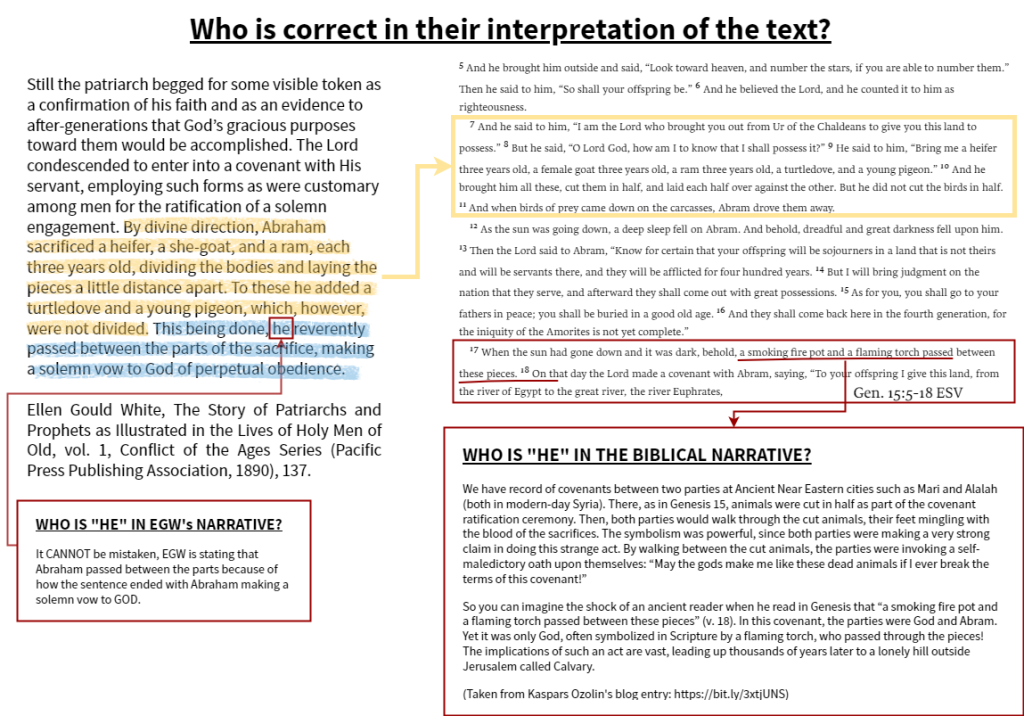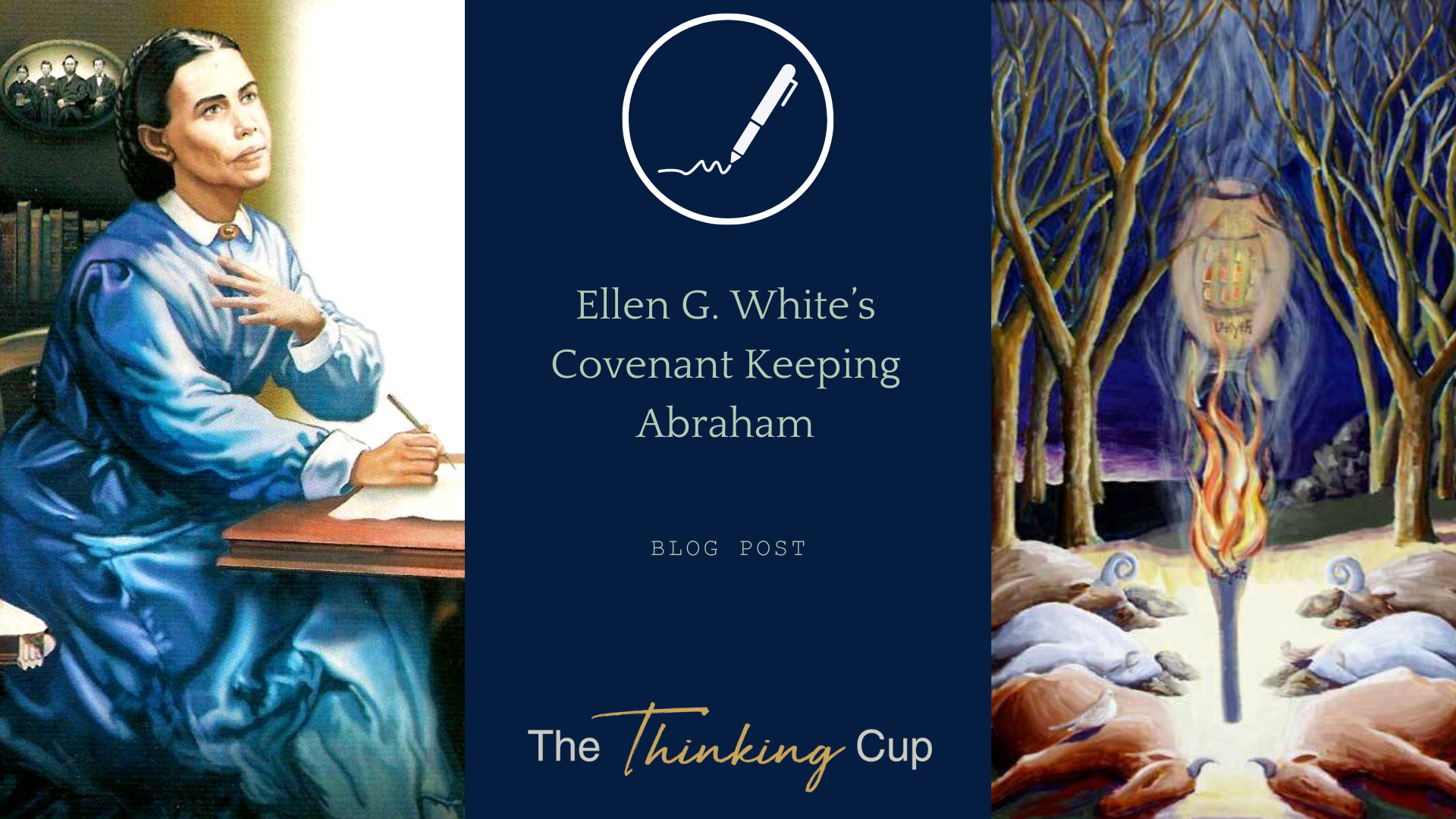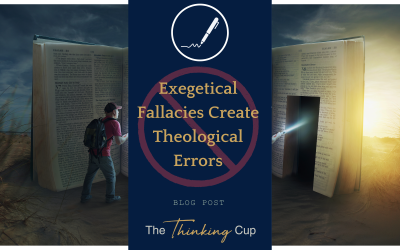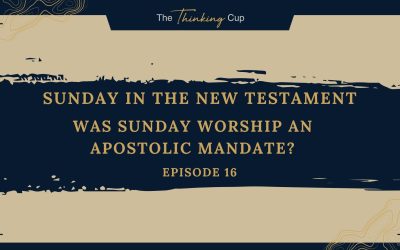Many of us are familiar with the covenant that was made with Abraham in Genesis 15. We at least know that God made covenants with certain individuals and groups in the Old Testament. It’s important to understand what a covenant was in the Ancient Near Eastern (ANE) culture. It has become glaringly clear to me, that most Adventists, as well as Christians, haven’t spent enough time understanding the lens of Covenant relationships in the ANE. Once we explore what a covenant is, we will discuss a couple of challenges that one faces in modern times with this topic. By approaching the topic in this manner, we can see how Ellen G. Whites’s interpretation is misinformed and re-interprets the Biblical narrative to fit her overarching Great Controversy Theme.
What is a Covenant in Ancient Near Eastern Thought?
Let’s begin by obtaining a proper understanding of the Biblical concept from an excerpt in the Anchor Yale Bible Dictionary on the topic of Covenant:
A “covenant” is an agreement enacted between two parties in which one or both make promises under oath to perform or refrain from certain actions stipulated in advance. As indicated by the designation of the two sections of the Christian Bible—Old Testament (= covenant) and New Testament—“covenant” in the Bible is the major metaphor used to describe the relation between God and Israel (the people of God). As such, covenant is the instrument constituting the rule (or kingdom) of God, and therefore it is a valuable lens through which one can recognize and appreciate the biblical ideal of religious community.[1]
While this is not an exhaustive explanation of the topic, one can begin to see the function of a covenant. First, there must be two parties involved for a covenant to take place. Second, there are promises made either by one party or by both parties. There are two types of Covenants in the ANE during the Biblical period. Depending on which party is making the promise and how the covenant is then ratified will determine if the covenant is a unilateral or bilateral covenant agreement.
-
- Bilateral covenants, which placed obligations on both parties. The agreement was conditioned on one party fulfilling their obligations (e.g., “If you will … then I will …”)
- Unilateral covenants, which were unconditionally guaranteed by the party initiating the agreement (e.g., “I will …”)[2]
While there isn’t any agreement among scholars as to the exact number of covenants and agreements made in the Old Testament, there is unity around the major covenants found in the overarching narrative of Scripture, from Genesis to Revelation.
- Adamic Covenant (bilateral/conditional) – Covenant of Works with Adam and Eve in Genesis 2
- No Sign is specifically stated in Scripture, but the Tree of the Knowledge of Good and Evil is at the center of this Covenant.
- Noahic Covenant (unilateral/unconditional) – Covenant of ‘Never Again’ with God and the Earth in Genesis 9. In this Covenant, God promises to uphold creation, and that sin and the effects of the curse will not stop his purposes for creation or those he created in his image.
- The Rainbow is the SIGN of this covenant. (Genesis 9:13)
- Abrahamic Covenant (unilateral/unconditional) – Covenant of Redemption and Grace between God and Abraham (and his descendants) in Genesis 12:1-2. In this Covenant, God promises to protect and give land to Abraham and his descendants if they follow God’s path. God also commands Abraham and his descendants to perform the ritual of circumcision as a symbol of the covenant.
- Circumcision is the SIGN of this covenant. (Genesis 17:11)
- Siniatic (Mosaic) Covenant (bilateral/conditional)—The imagery shifts here. The covenant is no longer established with a series of patriarchs and their families but with an entire nation. This covenant is not made with Moses but instead with the Israelite Nation, as the nation of Israel becomes “a people holy to the Lord your God, and the Lord has chosen you to be a people for his treasured possession, out of all the peoples who are on the face of the earth. (Dt 14:2) God outlines that Israel is a holy nation, a kingdom of priests, and a prized possession of God that he will protect. This covenant is conditional, meaning that Israel’s obedience or disobedience will determine whether it brings blessing or cursing.
- Sabbath is the SIGN of this covenant. (Exodus 31:12-17)
- Davidic Covenant (unilateral/unconditional) – God promises that a descendant of David will reign over the people of God. This covenant continues the earlier covenants by promising that a Davidic king will secure God’s promises of land, descendants, and blessing.
- No Sign given
- New Covenant (unilateral/unconditional) – God makes this covenant exclusively with Israel, and it is said to fulfill all previous covenants. Christ is said to fulfill the terms and requirements of the previous covenants, including the Adamic, Noahic, Abrahamic, Mosaic, and Davidic covenants. (Jeremiah 31:31-34)
- The ANOINTED MESSIAH is the sign of this New Covenant fulfilled in Jesus Christ.
By going through the covenant relationships at a high level like this, I hope one begins to see the relationships given in the Biblical text with these arrangements.
Honing in on Abraham
Now let’s zero in on just one of the covenantal stories told in Scripture and compare it with how Ellen G. White describes the narrative. Remember, the type of covenant, the parties involved, the equality of the parties, and the signs/symbols are all incredibly important in telling the relationship between those engaging in the oath. How it is ratified helps us to understand who is making the agreement and who plays what role.
We begin with the narrative told by Ellen G. White in her book The Story of the Patriarchs and Prophets as Illustrated in the Lives of Holy Men of Old. Many Adventists will know this book as Patriarchs and Prophets, but we will be reading from the original book manuscript Published by Pacific Press Publishing Association in 1890:
“Still the patriarch begged for some visible token as a confirmation of his faith and as an evidence to after-generations that God’s gracious purposes toward them would be accomplished. The Lord condescended to enter into a covenant with His servant, employing such forms as were customary among men for the ratification of a solemn engagement. By divine direction, Abraham sacrificed a heifer, a she-goat, and a ram, each three years old, dividing the bodies and laying the pieces a little distance apart. To these he added a turtledove and a young pigeon, which, however, were not divided. This being done, he reverently passed between the parts of the sacrifice, making a solemn vow to God of perpetual obedience.” [3]
Pay close attention to what Ellen is claiming in the last sentence, which I have emphasized. It cannot be mistaken, she is claiming that Abraham passed between the parts because of how the sentence ended with Abraham making a solemn vow to God. We now must compare this with what Scripture states:
5 And he brought him outside and said, “Look toward heaven, and number the stars, if you are able to number them.” Then he said to him, “So shall your offspring be.” 6 And he believed the Lord, and he counted it to him as righteousness. 7 And he said to him, “I am the Lord who brought you out from Ur of the Chaldeans to give you this land to possess.” 8 But he said, “O Lord God, how am I to know that I shall possess it?” 9 He said to him, “Bring me a heifer three years old, a female goat three years old, a ram three years old, a turtledove, and a young pigeon.” 10 And he brought him all these, cut them in half, and laid each half over against the other. But he did not cut the birds in half. 11 And when birds of prey came down on the carcasses, Abram drove them away. 12 As the sun was going down, a deep sleep fell on Abram. And behold, dreadful and great darkness fell upon him. 13 Then the Lord said to Abram, “Know for certain that your offspring will be sojourners in a land that is not theirs and will be servants there, and they will be afflicted for four hundred years. 14 But I will bring judgment on the nation that they serve, and afterward they shall come out with great possessions. 15 As for you, you shall go to your fathers in peace; you shall be buried in a good old age. 16 And they shall come back here in the fourth generation, for the iniquity of the Amorites is not yet complete.” 17 When the sun had gone down and it was dark, behold, a smoking fire pot and a flaming torch passed between these pieces. 18 On that day the Lord made a covenant with Abram, saying, “To your offspring I give this land, from the river of Egypt to the great river, the river Euphrates, 19 the land of the Kenites, the Kenizzites, the Kadmonites, 20 the Hittites, the Perizzites, the Rephaim, 21 the Amorites, the Canaanites, the Girgashites and the Jebusites.” (Ge 15:5–21)
Notice that Ellen White follows the story narrative identically by comparing her statements about the exact sacrifice and process with that found in Genesis 15:7-11.

(The image is a good reference for this comparison)
She references the heifer, dividing the bodies and laying the pieces a little distance apart, while also referring to the turtledove, a young pigeon, and adding that these last two were not divided. There is no doubt that she is claiming that her narrative is accurate and states her interpretive truth: Abraham walked between the parts of the sacrifice to be involved in the covenant agreement and promised through a solemn vow to God that he would forever be obedient.
In Ellen White’s version, the Abrahamic Covenant is a bilateral/conditional agreement between Abraham and God. Abraham vowed to be obedient, and God promised to honor his faithfulness by allowing Abraham and his descendants to inherit the land of Canaan. She goes on to add further details to the text to bolster her interpretation of the event:
“And the voice of God was heard, bidding him not to expect immediate possession of the Promised Land, and pointing forward to the sufferings of his posterity before their establishment in Canaan. The plan of redemption was here opened to him, in the death of Christ, the great sacrifice, and His coming in glory. Abraham saw also the earth restored to its Eden beauty, to be given him for an everlasting possession, as the final and complete fulfillment of the promise.”[4]
As you read more into Ellen White’s supposedly divine commentary and infallible interpretation of the story, she then moves back to the Biblical narrative and states that God passed between the sacrificial animal pieces in the form of a smoking furnace and burning lamp and consumed the pieces, which confirmed the promise that God would give them the land of Canaan.
In ancient Near Eastern cities like Mari and Alalah (modern-day Syria), we have evidence of covenants between two parties involving a ritual where animals were cut in half. Both parties would then walk through the split animals, their feet touching the blood of the sacrifices. This act carried deep symbolism, as it represented a serious oath: “May the gods make me like these dead animals if I break this covenant!”
Now, consider the surprise an ancient reader might feel when encountering Genesis 15, where “a smoking fire pot and a flaming torch passed between these pieces” (v. 18). In this covenant, the agreement was between God and Abram, but only God—represented by the flaming torch—passed through the pieces. This significant act foreshadows events that would unfold thousands of years later at a place called Calvary, just outside Jerusalem.
We see a clear contradiction between the story retold by Ellen G. White and that which is told in the Holy Scriptures!
Understanding Ellen White’s Reinterpreted Abraham
Kaspars Ozolins rightly points out,
“Serious implications about Ellen White’s work follow from this example. First, though she may not have said it explicitly, by contradicting Scripture in such a “bold” manner, White clearly felt she was justified in adjusting, changing, even denying basic details of Scripture. This is of a piece with White’s repeated statements that her own authority comes from God himself by means of her “accompanying angel” and by the approximately 2,000 visions that Adventists claim she had in her lifetime.
The Conflict of the Ages series turns out to be no ordinary commentary on the Bible. Unlike actual commentaries, which offer scholarly comments on holy Scripture, Ellen White constructed an alternative body of literature, a “Bible” thoroughly infused with her Great Controversy paradigm. The “lesser light” is a rival light, designed to reconfigure the Bible’s stories, characters, and themes, bit by bit, in order to ultimately present a different gospel.”[5]
One might ask, “Why did Ellen White need to change the narrative so that her Abraham is a covenant keeper, loyal to God through obedience?” The answer is that Ellen White orchestrated the Great Controversy Theme, which is all about vindicating God’s character through humanity’s obedience.
In Desire of Ages, Ellen White explains her own version of the gospel in detail:
“The law requires righteousness,—a righteous life, a perfect character; and this man has not to give. He cannot meet the claims of God’s holy law. But Christ, coming to the earth as man, lived a holy life, and developed a perfect character. These He offers as a free gift to all who will receive them. His life stands for the life of men. Thus they have remission of sins that are past, through the forbearance of God. More than this, Christ imbues men with the attributes of God. He builds up the human character after the similitude of the divine character, a goodly fabric of spiritual strength and beauty. Thus the very righteousness of the law is fulfilled in the believer in Christ. God can “be just, and the justifier of him which believeth in Jesus.” Romans 3:26.”[6]
White’s use of Romans 3:26 at the end is a clever distraction. Her earlier statements have already undermined this powerful biblical truth. In Ellen White’s view, Jesus, like her version of Abraham, “developed a perfect character.” Forgiveness for “sins that are past” is somehow granted “through the forbearance of God,” and Christ supposedly “builds up the human character after the likeness of the divine character,” which supposedly results in fulfilling “the very righteousness of the law.”
If you look past Ellen White’s elegant King James-style language, you’ll uncover deeply troubling ideas about God that diminish the true person and work of Jesus Christ. The more she highlights human achievements, the more she undermines the completed work of Christ on the cross.
The Bible paints a complex and often unflattering picture of Abraham. While he, along with many others, is praised in Hebrews 11, it is their faith in God that sets these biblical figures apart. Some readers might wonder why characters like Jephthah and Samson are included in this “hall of faith” in Hebrews.
But we shouldn’t be surprised. Compared to Jesus Christ, every person who has ever lived—even those considered righteous—has been flawed and sinful. As Isaiah starkly puts it, “all our righteous deeds are like a polluted garment” (Isaiah 64:6). Even our best efforts fall short before a holy God.
Yet, we give thanks to God the Father, who sent His Son, Jesus Christ, born of a virgin and born under the law (Galatians 4:4). “For while we were still weak, at the right time Christ died for the ungodly” (Romans 5:6).
What Jesus accomplished is perfect, complete, and beyond comparison. One of the most powerful passages in Scripture is Paul’s explanation in Romans 4:5: “And to the one who does not work but believes in him who justifies the ungodly, his faith is counted as righteousness.”
Do you see that? In Christ, God justifies the ungodly!
The Final Question
Let’s circle back to the purpose of this article. It has become abundantly clear to me that Ellen G. White has blinded hundreds of thousands of people over the last 150 years by reinterpreting Scripture into being something that is completely at odds with the truth in Scripture.
She boldly asserts,
“I cannot at my own impulse take up a work and launch out into it. I have to be impressed by the Spirit of God. I cannot write unless the Holy Spirit helps me.” [7]
While this has been a small glimpse into the serious problem with using a lady from the 1800’s who claimed to have some sort of divine access to God as your interpretive rule, my question is this:
Will you continue to have your Biblical narrative and interpretation of Scripture led by a lady, Ellen G. White, who clearly breaks the 9th commandment through her repeated lying and bearing false witness in her books?
I’ll leave you with Ellen White’s own words.
“I have written many books, and they have been given a wide circulation. Of myself I could not have brought out the truths in these books, but the Lord has given me the help of His Holy Spirit. These books, giving the instruction that the Lord has given me during the past sixty years, contain light from heaven, and will bear the test of investigation.” [8]
Has her books and writings ‘bore the test of investigation’ in your own mind?
[1] George E. Mendenhall and Gary A. Herion, “Covenant,” in The Anchor Yale Bible Dictionary, ed. David Noel Freedman (New York: Doubleday, 1992), 1179.
[2] Joel T. Hamme and J. Carl Laney, “Covenant, Critical Issues,” in The Lexham Bible Dictionary, ed. John D. Barry et al. (Bellingham, WA: Lexham Press, 2016).
[3] Ellen Gould White, The Story of Patriarchs and Prophets as Illustrated in the Lives of Holy Men of Old, vol. 1, Conflict of the Ages Series (Pacific Press Publishing Association, 1890), 137.
[4] Ellen Gould White, The Story of Patriarchs and Prophets as Illustrated in the Lives of Holy Men of Old, vol. 1, Conflict of the Ages Series (Pacific Press Publishing Association, 1890), 137.
[5] Ozolins, “False Abraham Created By Ellen White.”
[6] Ellen Gould White, The Desire of Ages, vol. 3, Conflict of the Ages Series (Pacific Press Publishing Association, 1898), 762.
[7] Ellen Gould White, Selected Messages From the Writings of Ellen G. White, Book 3 (Review and Herald Publishing Association, 1980), 49.
[8] Manuscript Releases [Nos. 19–96, 1941–1957], vol. 1 (Ellen G. White Estate, 1993), 140–141.




0 Comments